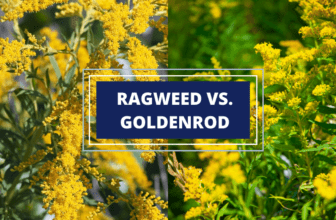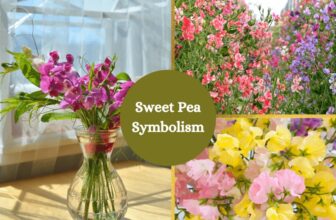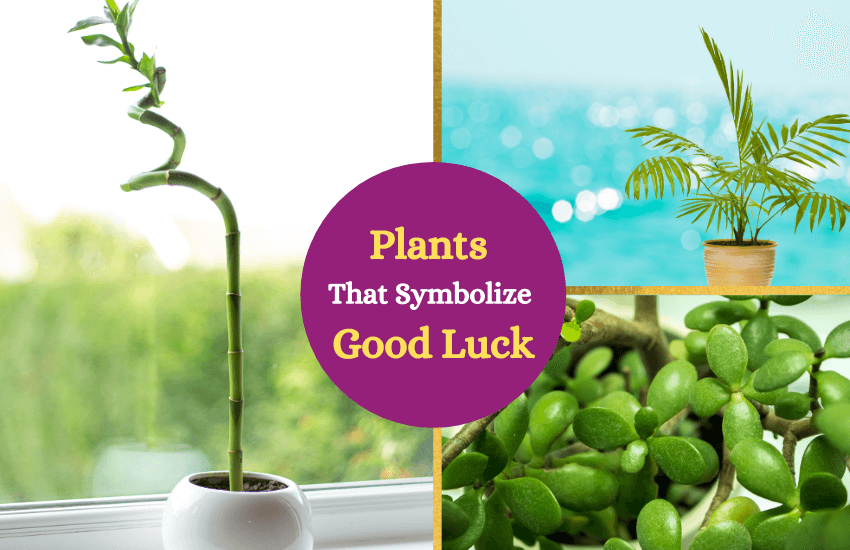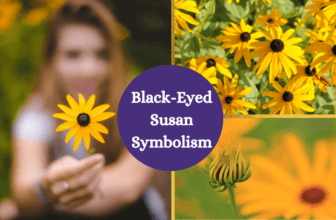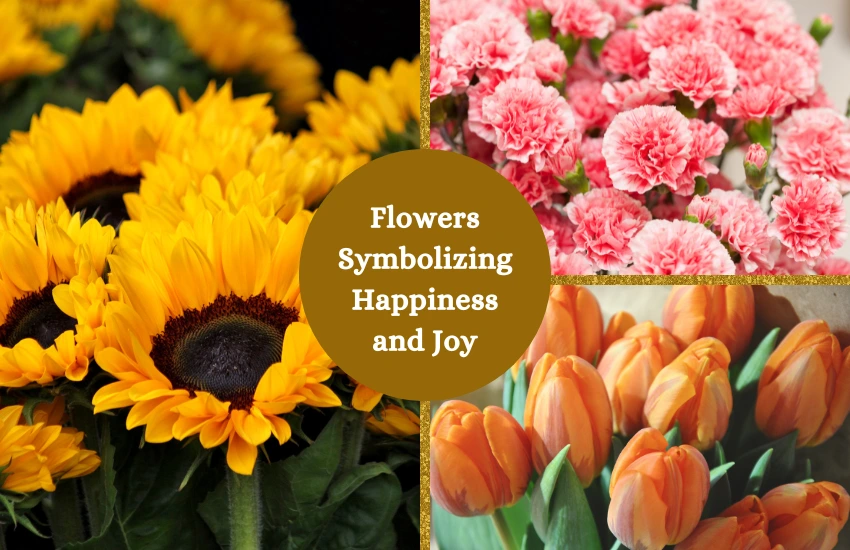
Table of Contents
There’s something about flowers that can lift our spirits and bring a smile to our faces. Perhaps it’s their delicate beauty, their sweet fragrance, or their vibrant colors that make us feel happier. But did you know some flowers are believed to have a deeper symbolism of happiness?
In this article, we’ll explore 25 flowers that are said to bring joy and happiness to our lives. These flowers have been celebrated throughout history for their ability to uplift our moods and bring joy.
1. Sunflower
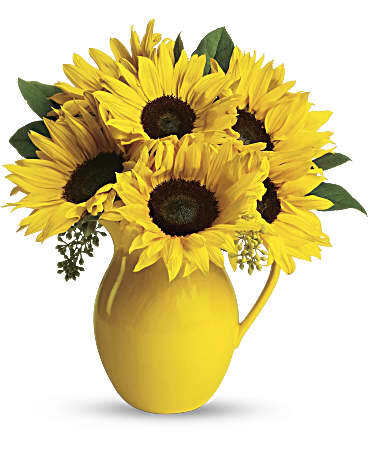
Sunflowers have a strong association with happiness. A sunflower stands tall with its bright yellow head full of vibrant yellow petals. These flowers can turn towards the sun and follow its path. throughout the day, which is why they are often associated with positivity and optimism. Sunflowers symbolize loyalty and devotion, as they always turn towards the sun no matter where it is in the sky.
In addition to their sunny appearance, sunflowers have a rich history of symbolism. In ancient Greek mythology, the sunflower was associated with the sun god Apollo and was seen as a symbol of light and knowledge. The Native American Hopi tribe also saw sunflowers as a symbol of happiness and used them in religious ceremonies.
Sunflowers are often given as gifts to bring joy and happiness to the recipient, and their bright and cheerful appearance can lift spirits and bring a smile to anyone’s face. These flowers are also popular for summer weddings and events, bringing warmth and happiness to any setting.
Whether you want to brighten up a room or give a gift that symbolizes happiness and positivity, the sunflower is an excellent choice. Its warm and inviting presence can bring light and joy to any occasion.
2. Gerbera Daisy
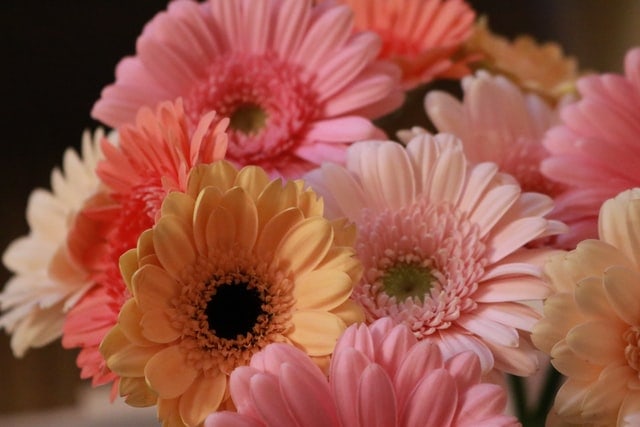
Gerbera daisies are known for their bold and bright colors and are commonly associated with happiness and positivity. With their symmetrical petals in pink, red, yellow, and orange hues, these cheerful flowers can brighten anyone’s day.
It has become a popular choice for expressing joy, optimism, and friendship in modern times. In addition to their beautiful appearance, Gerbera daisies are also easy to care for and have a long vase life, making them a perfect choice for gift-giving. They are often given to celebrate special occasions or brighten someone’s day.
3. Marigold
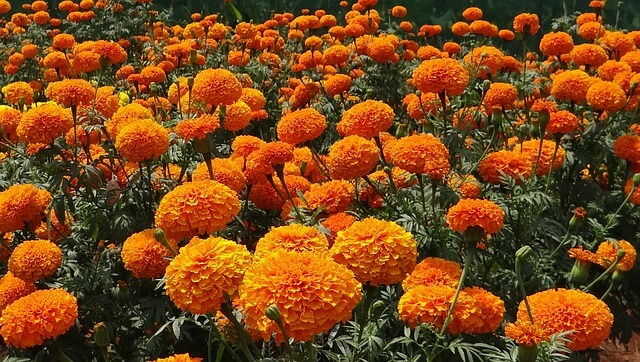
Marigolds are bright and cheerful flowers used for centuries to symbolize happiness. Native to Mexico and Central America, marigolds were highly valued by the Aztecs for their medicinal and spiritual properties. Today, marigolds are still cherished for their beauty and ability to bring joy and happiness to any space.
In many cultures, marigolds are associated with the sun and are used in festivals and celebrations. In India, marigolds are often used in garlands and symbolize good luck and fortune. Mexicans use marigolds to celebrate the Day of the Dead and decorate altars and gravesites with this beautiful flower.
Aside from their cultural significance, marigolds are also popular for their medicinal properties. They contain anti-inflammatory and antiseptic compounds, making them useful in treating wounds, reducing inflammation, and easing digestive issues.
4. Daffodil
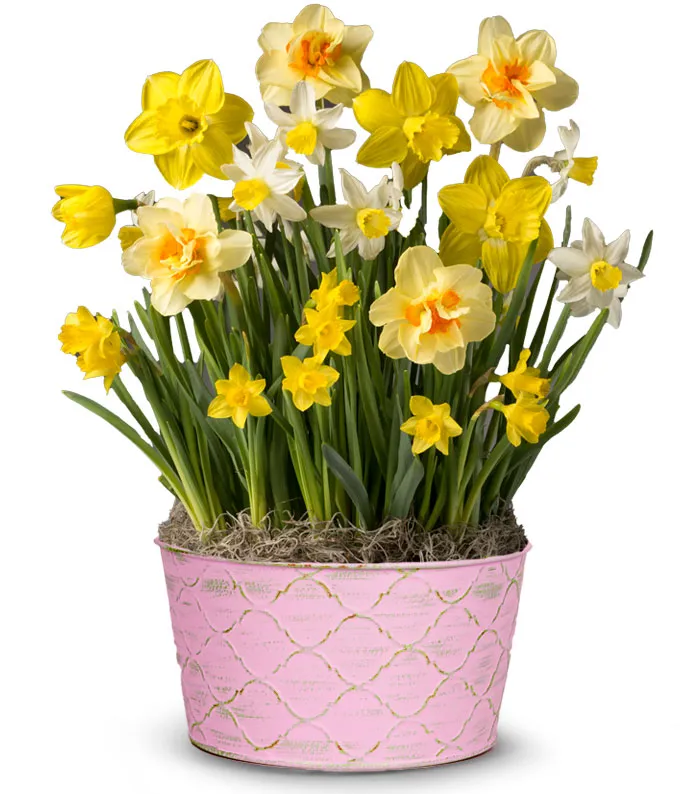
Daffodils are among the most popular spring flowers, and their bright yellow color is often associated with happiness and sunshine. As a symbol of new beginnings, daffodils represent hope, joy, and happiness.
In ancient times, daffodils were believed to have magical powers and were used in various rituals and spells. In Greek mythology, the daffodil is associated with the god Narcissus. After falling in love with his own reflection, Narcissus was transformed into a flower. Today, the daffodil is recognized as the symbol of the American Cancer Society and is given to cancer survivors as a symbol of hope and new beginnings.
In addition to their symbolic meanings, daffodils have many practical uses. They are used in perfumes, lotions, and other cosmetic products, and their bulbs are sometimes used in cooking as a flavoring agent. Daffodils are also popular as cut flowers and are often used on special occasions.
5. Daisy
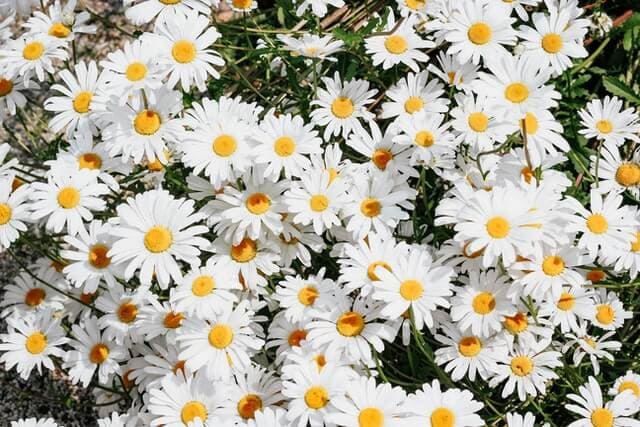
Daisies are among the most cheerful and beloved flowers in the world. These sweet and delicate blooms symbolize happiness, purity, and innocence and are a common sight in gardens, meadows, and even on the side of the road. The simple yet beautiful shape of the daisy is instantly recognizable, with its bright yellow center and white petals radiating outwards.
In addition to their symbolism of happiness, daisies have a rich history of use in folklore and medicine. In ancient times, daisies were believed to have healing properties and were used to treat various ailments. They were also associated with the Roman goddess Flora and were used in festivals celebrating spring and new beginnings.
6. Iris
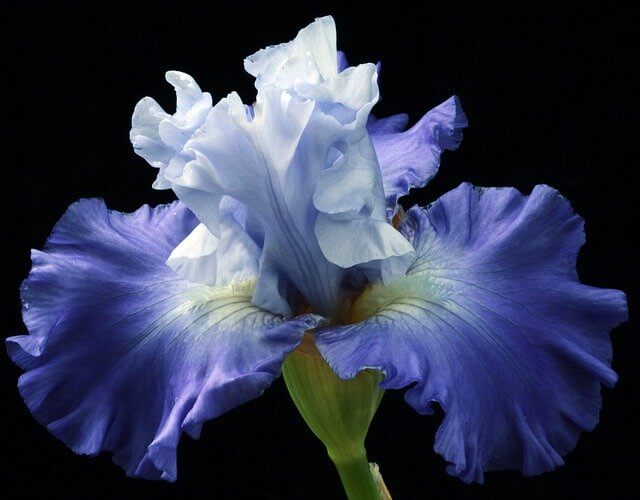
Regarding flowers that symbolize happiness, the Iris is a popular choice. This elegant and regal flower is often associated with royalty but symbolizes hope, faith, and wisdom. In Greek mythology, the Iris was the messenger of the gods, traveling between heaven and earth to deliver important messages. The Iris comes in various colors, including purple, white, yellow, and blue, each with its unique meaning.
Purple Irises symbolize wisdom and compliments, while blue Irises symbolize faith and hope. The Iris is a perfect gift for someone who needs encouragement or a reminder to stay hopeful during challenging times. Its striking beauty and rich symbolism make it a great choice for anyone who loves flowers and appreciates the power of nature to uplift and inspire.
7. Carnation
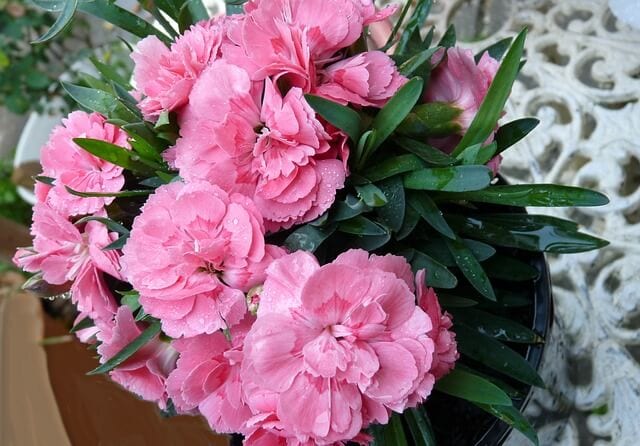
Carnations are beautiful flowers with ruffled petals in various colors, from classic pink to bright orange. These beautiful flowers are often seen as a sign of love and affection but can also mean happiness. Carnations symbolize happiness because of their bright colors and light scent, instantly brightening any room and making people feel better.
Carnations are beautiful, but they also have a long and interesting history. They were popular in ancient Greece, where their sweet smell was prized and used to honor the gods in wreaths. Later, during the Victorian era, carnations became popular for showing love and affection and were often given as gifts.
Carnations are still popular for bouquets and flower arrangements today, especially for weddings and Mother’s Day.
8. Hydrangea
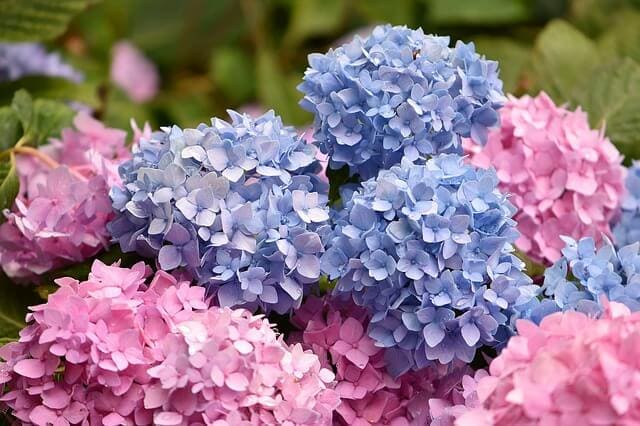
Hydrangeas are popular flowers known for their stunning beauty and vibrant colors. Hydrangeas have long been associated with joy, gratitude, and love.
The reason why hydrangeas represent happiness is because of their unique shape and color. With their large clusters of delicate petals, hydrangeas are reminiscent of fluffy clouds on a sunny day. Their colors range from pink, blue, purple, white, and green, bringing happiness and tranquility.
In addition to their beauty, hydrangeas have a long history of use in traditional medicine to treat various ailments, from headaches to kidney stones. This further cements their association with happiness and well-being.
9. Peony
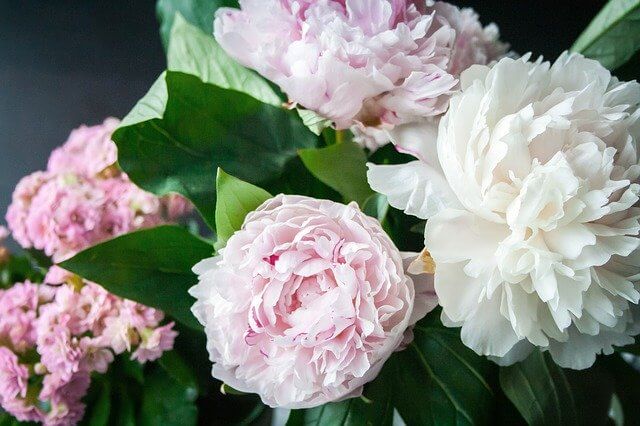
Peonies are known for their beauty, fragrance, and delicate appearance. They come in various colors and have been a favorite of gardeners for centuries. In Chinese culture, peonies are considered the “king of flowers” and symbolize honor, wealth, and distinction. In Japan, they are associated with bravery and are often used in samurai crests.
In the language of flowers, peonies represent a happy life, good fortune, and compassion. Many also believe that they bring healing, especially to those who are going through a difficult time.
Peonies are popular for weddings and other special occasions, as their beauty and symbolism make them a perfect gift. Whether given as a gift or enjoyed in a garden, peonies are a beautiful and meaningful symbol of happiness.
10. Lavender
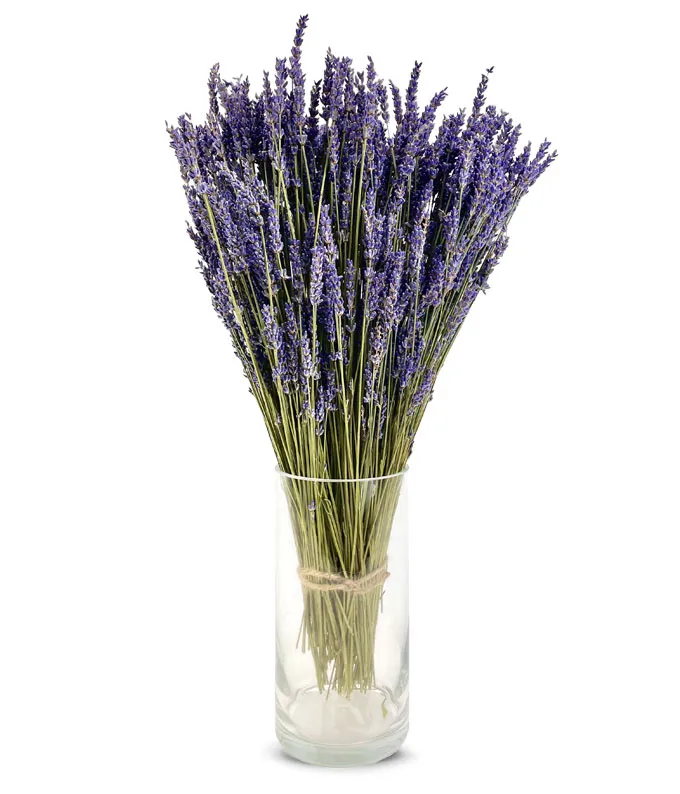
Lavender is not only known for its sweet fragrance but also for its symbolism of happiness. This delightful plant is a member of the mint family, and it’s been used for thousands of years for its healing and calming properties. The purple flowers bring peace, serenity, and joy to those who receive them.
Lavender is also associated with happiness and positivity. Its delicate purple flowers represent grace, elegance, and refinement. Lavender’s pleasant aroma and cheerful color uplift the spirit and promote a sense of happiness and well-being. This makes lavender a perfect gift choice, as it conveys feelings of love, gratitude, and happiness.
Lavender is a versatile and beloved plant that cultures have embraced, whether used in home decor, cooking, or personal care products. Its symbolism of happiness and positive energy makes it popular for various occasions, from weddings and birthdays to graduations and promotions.
11. Primrose

When it comes to flowers, primrose is an excellent representation of happiness. This delicate flower comes in various vibrant colors, ranging from deep purples and blues to pinks and yellows, which adds to its symbolism of joyfulness and cheerfulness.
Primroses are commonly associated with the beginning of spring, as they are often the first flowers to bloom after winter. This seasonal aspect of primroses adds to their symbolism of new beginnings and fresh starts, bringing hope and optimism.
In many cultures, primroses are associated with youthfulness and innocence, adding to their happy and positive symbolism. They are often given as gifts to express gratitude, appreciation, and love, making them perfect for spreading joy and happiness.
12. Ranunculus
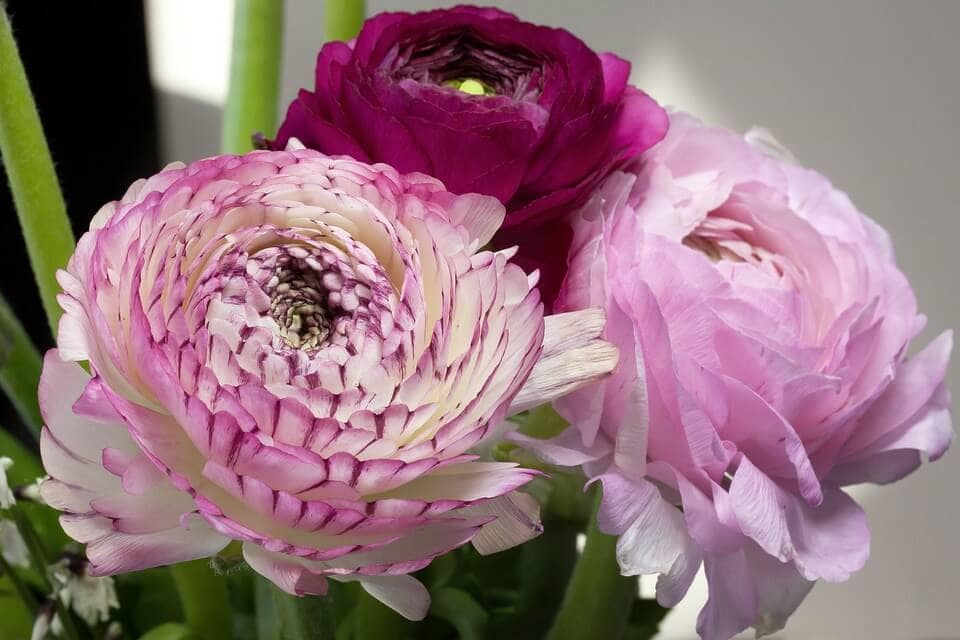
The Ranunculus, with its delicate layers of petals in vibrant hues, is a flower that exudes joy and happiness. Its bright colors and soft texture make it popular for weddings and other celebratory occasions.
The Ranunculus flower is said to have been created when a dashing prince fell in love with a beautiful nymph. She wasn’t interested and broke the prince’s heart, after which he died. People say that a Ranunculus flower grew from the ground where he died. Giving Ranunculus as a gift is a way of expressing one’s love and affection.
With its cheerful appearance and uplifting energy, the Ranunculus is a perfect way to brighten up any room and bring a smile to someone’s face. In addition to being a symbol of happiness, the Ranunculus also represents charm, beauty, and grace, making it a meaningful choice for any occasion.
13. Hibiscus
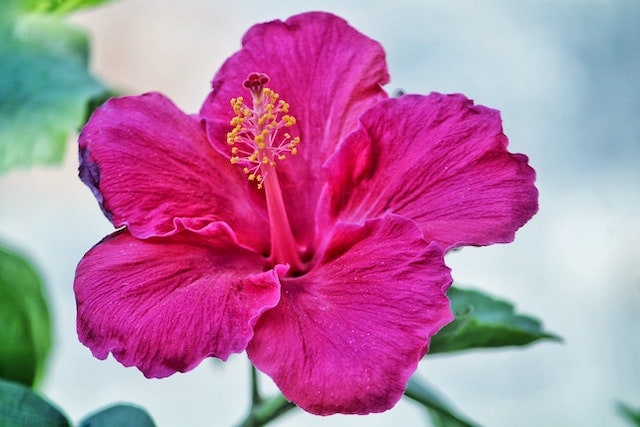
The hibiscus flower is a vibrant and colorful symbol of happiness that’s beloved around the world. The hibiscus has become a popular flower for decorating and gift-giving with its large, showy blooms in various bright colors. The hibiscus is associated with joy, celebration, and happiness in many cultures, making it a perfect choice for weddings and other special occasions.
In addition to its beauty and cheerful appearance, the hibiscus has a long history of use in traditional medicine. Many cultures use the flowers and leaves of the hibiscus plant to make tea, which is believed to have many medicinal benefits, including reducing inflammation, lowering blood pressure, and aiding digestion. Some studies have even suggested that hibiscus tea may have anti-cancer properties.
The hibiscus is also a popular flower in many religious and cultural traditions. In Hinduism, the hibiscus is associated with the goddess Kali and is often used in worship and offerings. The hibiscus is the state flower used in Hawaii’s leis and other floral arrangements.
14. Bouvardia
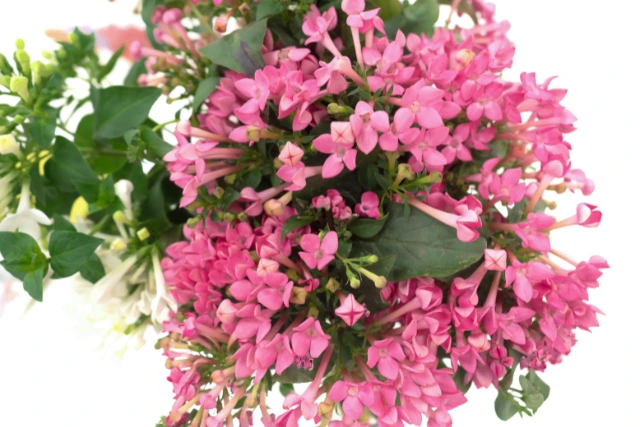
Bouvardia, a tropical flower native to Mexico, is known for its vibrant colors and delicate blooms. Often given as a gift to express love, appreciation, and joy, Bouvardia symbolizes happiness. Its bright, cheerful petals are said to represent positive energy and good fortune, making it a popular choice for weddings, birthdays, and other special occasions.
Bouvardia comes in a range of colors, including pink, white, yellow, and red, and its sweet, delicate scent makes it a favorite of florists and gardeners alike. It is also a symbol of creativity, with its intricate blooms and unique texture inspiring artists and designers worldwide.
In the language of flowers, Bouvardia is often associated with positive emotions, including happiness, joy, and gratitude. Whether gifted as a bouquet or grown in a personal garden, this beautiful flower brightens up even the gloomiest days.
15. Lilac
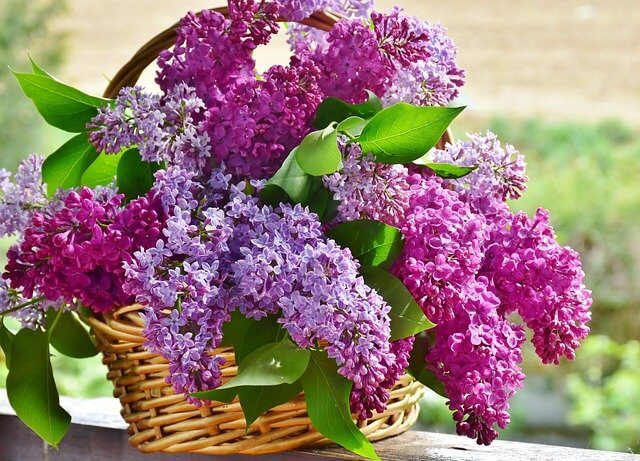
Lilacs are fragrant and delicate flowers often associated with spring and new beginnings. As a symbol of happiness, lilacs are said to represent the beauty and simplicity of life. Their sweet fragrance can evoke memories of happy times and lift one’s mood.
In addition to their emotional symbolism, lilacs have a rich cultural history. In ancient Greek mythology, lilacs were associated with Pan, the god of forests and fields. They were also used in Persian gardens as a symbol of love and were often given as gifts to express affection.
They come in purple, white, and pink, among other colors, and are often used in bouquets, table settings, and other flower arrangements.
16. Freesia
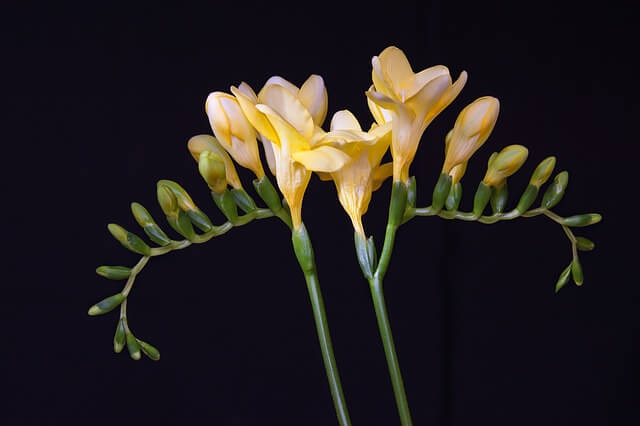
Freesia is an Iris family member and native to South Africa. Freesia’s trumpet-shaped flowers are available in various colors, from pure white to deep purple.
In the language of flowers, freesia symbolizes innocence, thoughtfulness, and friendship. Freesias also strongly connect to spring, as they typically bloom during this season. They symbolize renewal and hope, making them a popular gift for those going through difficult times or transitions.
Interestingly, freesia’s fragrance is also associated with happiness and positive emotions. Studies have shown that freesia’s scent can help reduce stress and promote relaxation. This may be because the scent of freesias is reminiscent of spring and renewal, which can positively affect our mood and emotions.
17. Buttercup
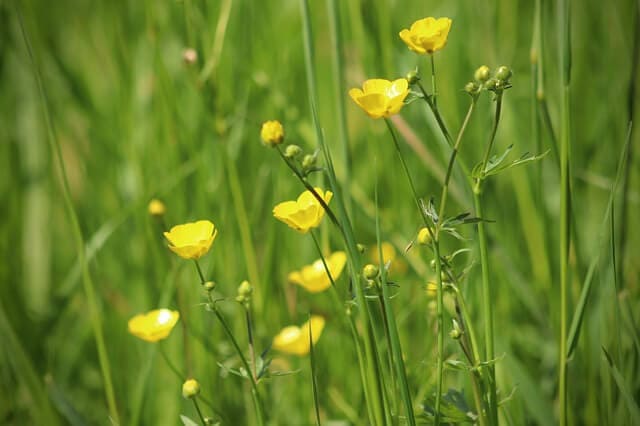
Buttercup is a true synonym for happiness. Their bright yellow color and delicate petals make them a popular symbol of happiness and joy. In ancient times, buttercups drove away evil spirits and negative energy, and people believed they brought good luck.
The delicate and sweet scent of the buttercup also adds to their appeal, making them a popular choice for bouquets and floral arrangements. Beyond their aesthetic qualities, buttercups also have medicinal properties and are used in traditional herbal remedies for various ailments.
For centuries, people have used buttercups to alleviate headaches, reduce fevers, and treat skin conditions. Buttercups are also often associated with springtime, new beginnings, and renewal, making them ideal for festivities.
18. Zinnia
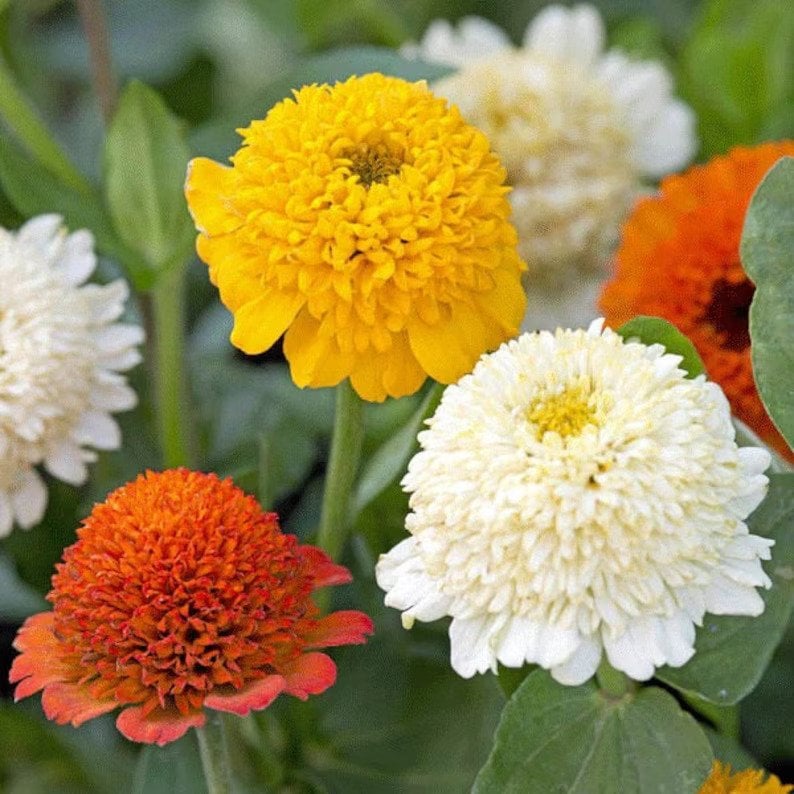
Zinnias are beautiful, colorful flowers that are loved by many. As a symbol of happiness, zinnias can bring joy and cheer to any space. These vibrant blooms are believed to represent lasting friendship, making them a popular choice for gifts between friends.
The name “zinnia” comes from German botanist Johann Zinn, who first described the flower in the 18th century. Native to Mexico, zinnias were initially grown for their medicinal properties, but their beauty soon made them popular as ornamental plants.
Zinnias come in many bright and bold colors, such as red, pink, orange, yellow, and purple. They often add a pop of color and a sense of joy to flower arrangements and gardens.
Zinnias are not only a sign of happiness but also of strength and remembering the past. They are often planted in memorial gardens to remember and honor people who have died.
19. Amaryllis
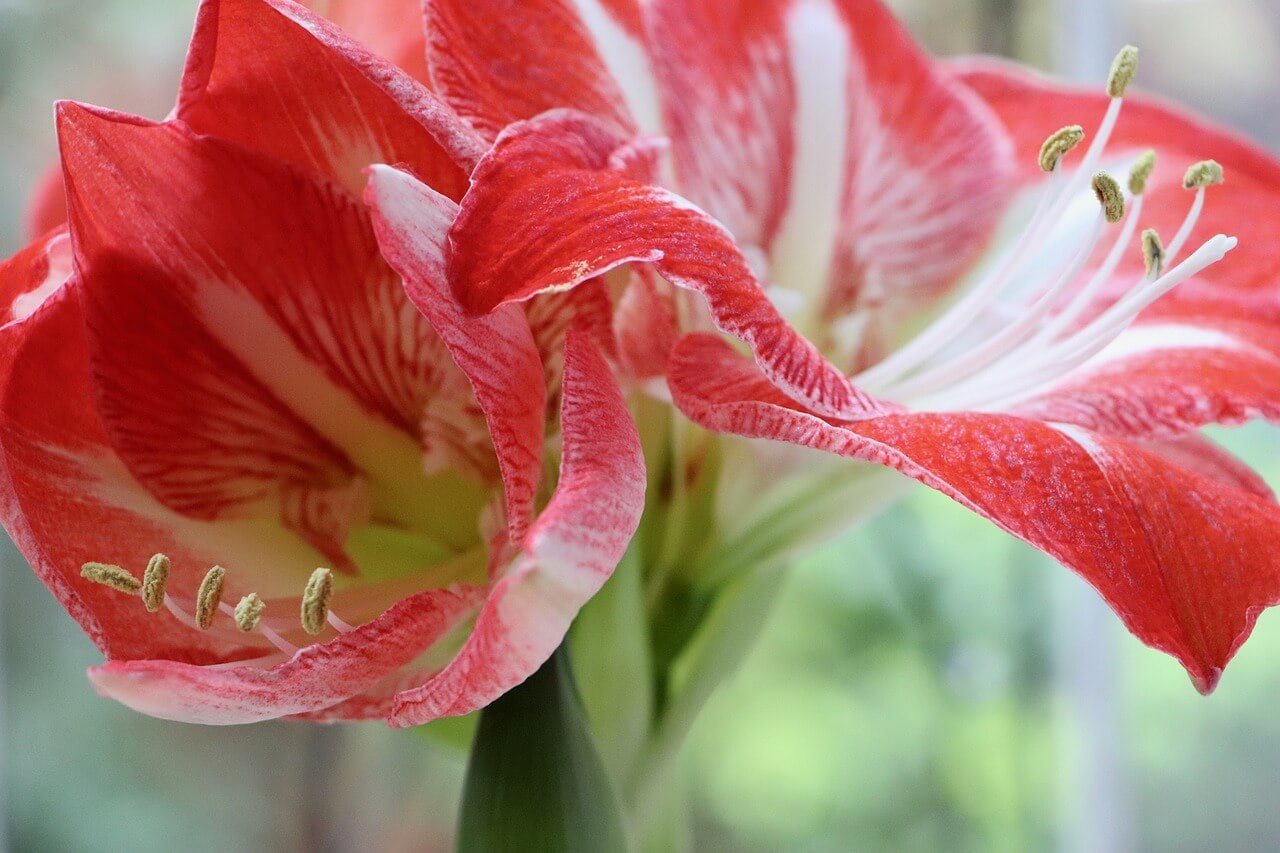
Amaryllis is a popular flower often given during the holiday season, but it’s not just a festive bloom. In Greek mythology, Amaryllis was a shy maiden who fell in love with a shepherd named Alteo. Her attempts to win his affection included piercing her heart with a golden arrow, which grew into the stunning flower we know today.
Amaryllis represents happiness and success, and its bold colors and elegant shape make it a perfect choice for festive occasions. Amaryllis can bloom for several weeks with proper care, making it an enduring symbol of joy and happiness.
Additionally, Amaryllis bulbs can be kept and replanted for future blooms, representing the cycle of life and the hope for future happiness. Its striking beauty and rich symbolism make Amaryllis a favorite among flower enthusiasts, bringing happiness and joy to those who receive them.
20. Camellia
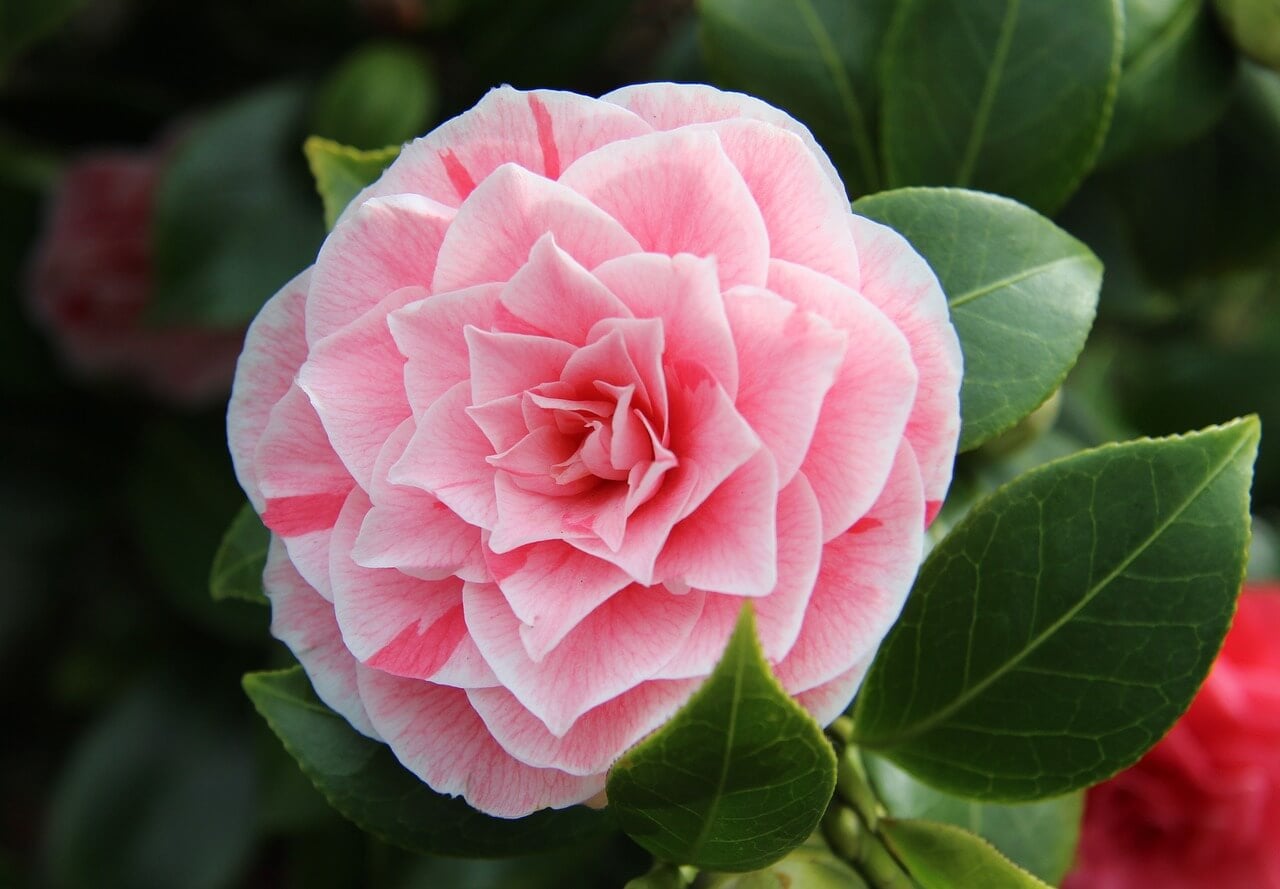
Camellias are not just any flower but the epitome of beauty, grace, and elegance. In many cultures, camellias represent happiness, love, and longevity. Originating in Asia, these delicate and fragrant blooms have been popular for centuries, and it’s no wonder why. They come in various colors, from classic white and pink to bright red and yellow.
Camellias are often used in weddings and other celebrations due to their association with happiness and good fortune. In traditional Chinese medicine, camellia oil promotes relaxation and balance, further cementing the flower’s reputation as a symbol of happiness.
Interestingly, in Japan, camellias are associated with the samurai and represent a noble death. Despite this, camellias are widely used to symbolize joy and happiness worldwide.
21. Tulip
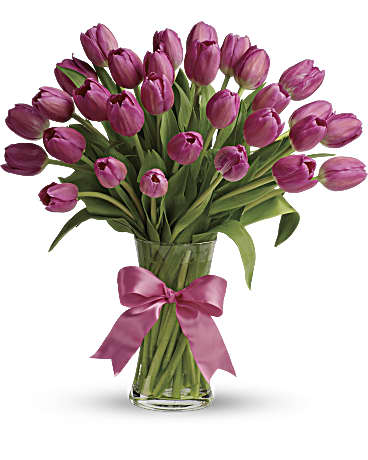
Tulips have been a beloved symbol of happiness and joy for centuries. These stunning flowers come in various colors, making them popular for indoor and outdoor decorations.
In addition to their beauty, tulips have a rich history and cultural significance. They were first cultivated in the Ottoman Empire and quickly became a beloved flower throughout Europe. The Dutch, in particular, developed a deep love for tulips, and their cultivation led to the famous “tulip mania” in the 17th century. During this time, tulips were so highly prized that they were traded for crazy prices.
Today, tulips symbolize happiness and optimism, with their bright colors and cheerful blooms inspiring joy and hope. They are often given as gifts to express love, gratitude, and congratulations and are a popular choice for springtime weddings and other celebrations.
22. Rose
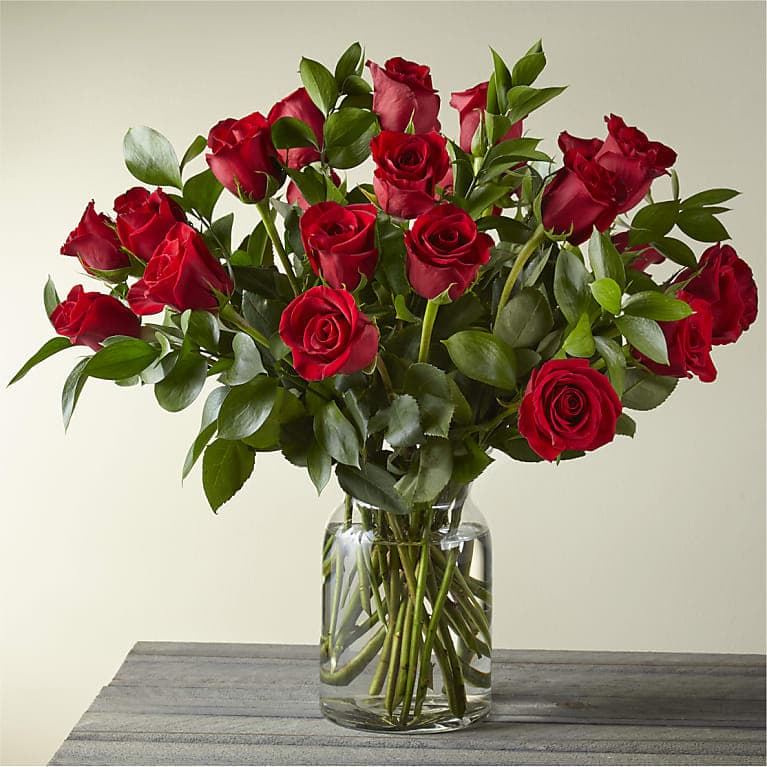
Widely recognized as one of the most beautiful and evocative flowers, roses have long symbolized happiness, love, and joy. These symbols of happiness permeate various cultures, art forms, and occasions, embodying a sense of warmth, affection, and delight.
With their elegant petals, vibrant colors, and intoxicating aroma, roses uniquely express a wide range of emotions, making them the perfect medium for conveying happiness.
Many cultures hold a special place for the rose to symbolize happiness. This connection traces back to ancient civilizations, such as the Greeks and Romans, who associated roses with Aphrodite and Venus,
the goddesses of love, beauty, and happiness. In later periods, Christian symbolism linked the rose with the Virgin Mary often portrayed holding roses as tokens of divine love and joy.
23. Gladiolus
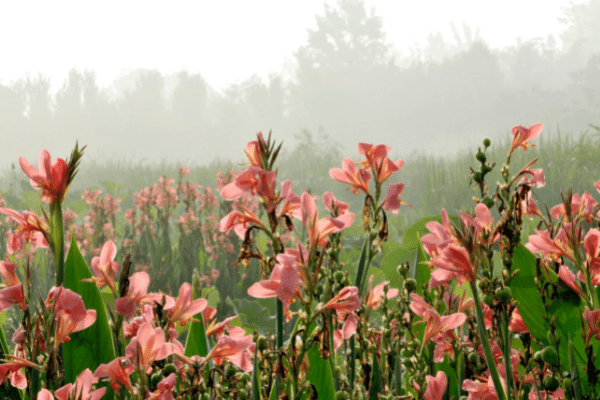
Gladiolus, also known as the sword lily, is a popular flower associated with strength and honor. However, it also holds a significant meaning when it comes to happiness. The tall and majestic flower represents the strength of character and integrity that leads to happiness.
With its vibrant and colorful blooms, gladiolus can brighten up any space and evoke joy and positivity. Its vertical growth symbolizes an upward movement towards happiness and success, making it popular for celebrations and special occasions. In ancient times, gladiolus was believed to have healing properties and was used to treat physical ailments and emotional distress.
24. Delphinium
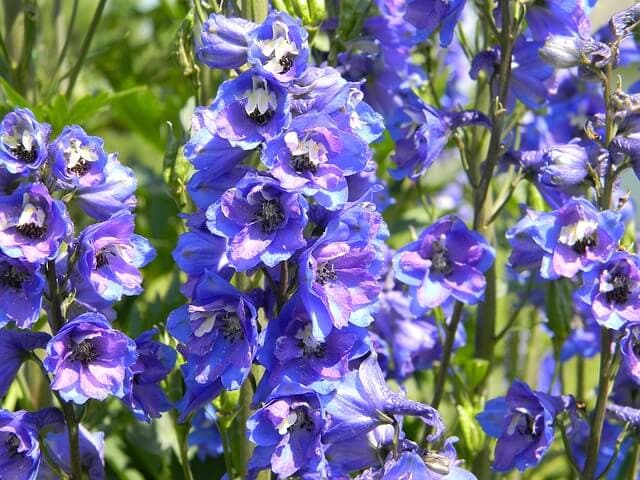
Delphinium is a tall, majestic flower that symbolizes happiness, joy, and positivity. Its striking, elongated shape and vibrant blue color make it a true epitome of happiness. In ancient Greek mythology, Delphinium was believed to have magical powers to ward off evil and bring good fortune.
Delphinium got its name from the Greek word for dolphin because its buds resemble the nose of a dolphin. Delphinium is also said to represent the larkspur, the birth flower for those born in July.
Along with happiness, Delphinium can also symbolize new beginnings, grace, and a sense of lightness or airiness. While blue is the most common color for Delphinium, it can also be found in shades of pink, purple, and white. Whether used as a standalone flower or combined with other blooms, Delphinium adds a touch of joy and positivity to any setting.
25. Pansy
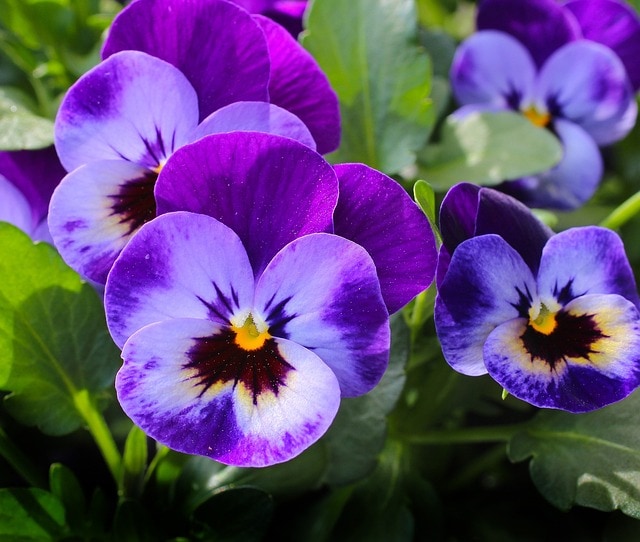
Pansies are cheerful and colorful flower that symbolizes happiness, love, and admiration. They are popular for gardens, window boxes, and floral arrangements. Pansies are native to Europe and Western Asia and have been cultivated for centuries.
The flower’s name comes from the French word “pensée,” which means “thought.” Pansies are also associated popular for Valentine’s Day and other romantic occasions.
Pansies have a distinctive “face,” with two upper petals that resemble ears and three lower petals that form the mouth. They come in various colors, including purple, yellow, blue, pink, and white. Pansies are also available in bi-colored and tri-colored varieties, with unique patterns and markings.
Pansies are easy to grow and require little maintenance, making them a great choice for novice gardeners. They thrive in cool weather and can be planted in the spring or fall. They are also a favorite of pollinators, such as bees and butterflies, making them a valuable addition to any garden.
Wrapping Up
People have used flowers as signs of happiness for hundreds of years, and they still do. Each flower has its beauty and meaning, from the bright, happy sunflower to the delicate and graceful cherry blossom.
Flowers can brighten up any room and make you happy, whether you give them as a gift or enjoy them in your home or garden. So, when you want to show someone you care, give flowers. Let their beauty and meaning make you happy every day.
Similar Articles:
Flowers that Symbolize Strength




